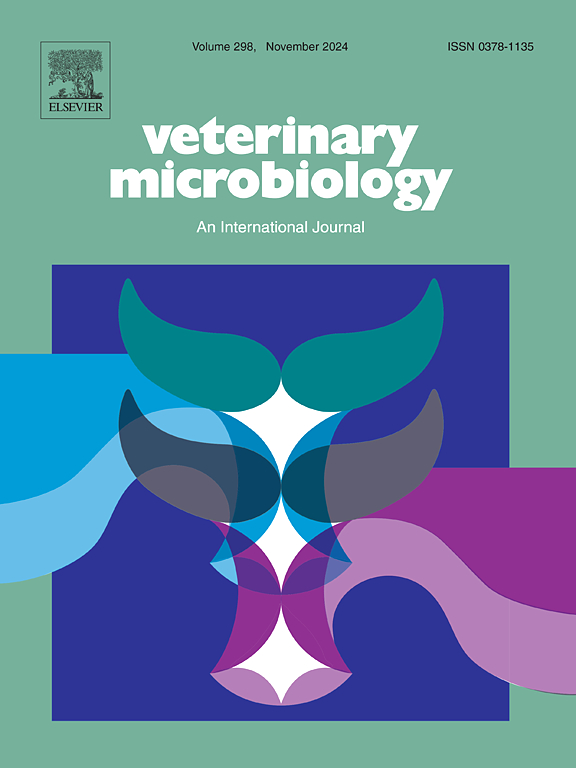Diagnosis of Mycobacterium leprae in free-living animals in a hyperendemic area in Brazil
IF 2.4
2区 农林科学
Q3 MICROBIOLOGY
引用次数: 0
Abstract
Mycobacterium leprae (M. leprae) is a globally distributed intracellular pathogen that causes human leprosy. For many years, M. leprae has been considered a human-only pathogen. However, the discovery of infected armadillos (Dasypus novemcinctus) has led to studies into its presence in animals. Many questions regarding leprosy remain unanswered, such as the epidemiological role of the environment and animals in maintaining of the disease. Thus, the objective of this study was to identify M. leprae in wild animals in Brazil. Samples from 105 wild animals of different species were analyzed using polymerase chain reaction of the RLEP region to detect M. leprae in biological samples. M. leprae was detected in 13 samples (12.3 %) from animals in the orders Artiodactyla, Carnivora, Cingulata, Pilosa, Primates and Rodentia. Eight samples were sequenced and they had 100 % identity to microorganisms of the same species. This study identified different species of wild animals infected with M. leprae in a region hyperendemic for leprosy, demonstrating that these animals may play important roles in the epidemiology and in maintaining the disease.
求助全文
约1分钟内获得全文
求助全文
来源期刊

Veterinary microbiology
农林科学-兽医学
CiteScore
5.90
自引率
6.10%
发文量
221
审稿时长
52 days
期刊介绍:
Veterinary Microbiology is concerned with microbial (bacterial, fungal, viral) diseases of domesticated vertebrate animals (livestock, companion animals, fur-bearing animals, game, poultry, fish) that supply food, other useful products or companionship. In addition, Microbial diseases of wild animals living in captivity, or as members of the feral fauna will also be considered if the infections are of interest because of their interrelation with humans (zoonoses) and/or domestic animals. Studies of antimicrobial resistance are also included, provided that the results represent a substantial advance in knowledge. Authors are strongly encouraged to read - prior to submission - the Editorials (''Scope or cope'' and ''Scope or cope II'') published previously in the journal. The Editors reserve the right to suggest submission to another journal for those papers which they feel would be more appropriate for consideration by that journal.
Original research papers of high quality and novelty on aspects of control, host response, molecular biology, pathogenesis, prevention, and treatment of microbial diseases of animals are published. Papers dealing primarily with immunology, epidemiology, molecular biology and antiviral or microbial agents will only be considered if they demonstrate a clear impact on a disease. Papers focusing solely on diagnostic techniques (such as another PCR protocol or ELISA) will not be published - focus should be on a microorganism and not on a particular technique. Papers only reporting microbial sequences, transcriptomics data, or proteomics data will not be considered unless the results represent a substantial advance in knowledge.
Drug trial papers will be considered if they have general application or significance. Papers on the identification of microorganisms will also be considered, but detailed taxonomic studies do not fall within the scope of the journal. Case reports will not be published, unless they have general application or contain novel aspects. Papers of geographically limited interest, which repeat what had been established elsewhere will not be considered. The readership of the journal is global.
 求助内容:
求助内容: 应助结果提醒方式:
应助结果提醒方式:


